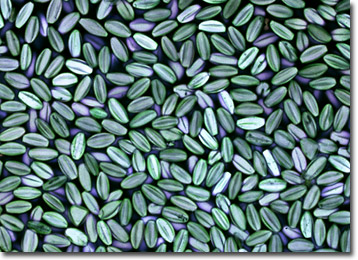 |
 |
 |
|
||||||||||||||||||||||||
 | ||||||||||||||||||||||||
 | ||||||||||||||||||||||||
 | ||||||||||||||||||||||||
Confocal Microscopy Image Gallery
Plant Tissue Autofluorescence Gallery
Maple Pollen
Approximately 200 species of deciduous trees and shrubs comprising the genus Acer are known as maples. The appearance of maples varies considerably, but most exhibit thick, brightly colored foliage in the autumn months.

Maples are popular ornamentals in temperate regions and some varieties are valued in the timber industry for their hard, close-grained wood, which can be used to produce high-quality furniture. The maple tree is perhaps best-known, however, for the sweet sap commonly harvested by tapping certain North American species. The maple syrup that traditionally is served accompanying pancakes, waffles, and other breakfast foods is produced by boiling down and processing the sap.
Maples are among the most troublesome trees for allergy sufferers. The pollen they produce is highly allergenic and some species, primarily the box elder which is pollinated solely by the wind, produce copious amounts of the microspores. In the United States, maple pollen season extends from February to May. The flowers of the maple are small and sometimes appear before the leaves in late winter or early spring. Often only one sex is functional in a single maple flower, but flowers of both sexes may be found on the same tree. Maple fruits, known as samaras or keys, are winged and born by the trees in pairs. Due to their design, samaras spin when they fall from the tree so that wind currents can easily carry them to new locales.
Contributing Authors
Nathan S. Claxton, Shannon H. Neaves, and Michael W. Davidson - National High Magnetic Field Laboratory, 1800 East Paul Dirac Dr., The Florida State University, Tallahassee, Florida, 32310.
